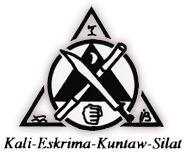These are the sources from which the current curriculum is drawn:
Jun Fan Gung Fu and the philosophy
and concepts of Jeet Kune Do
Bruce Lee exploded onto the martial arts scene in the 1960’s and immediately changed the way many of us perceived and thought about the martial arts. Mr. Lee and his close friend and assistant Dan Inosanto researched and tested methods from as many arts as they could, blending those concepts and techniques which they felt were best and adding concepts of their own.
The result of this process, often called Jeet Kune Do is more correctly referred to as Jun Fan Gung Fu. Jeet Kune Do is Bruce Lee’s philosophy of martial arts and of life; Jun Fan Gung Fu is the curriculum he used to express that philosophy.
Brazilian Jiu-Jitsu
Brazilian Jiu-jitsu is a grappling based martial art that grew from the popularity of several Japanese Judo and Jiu-jitsu practitioners who were immigrants to Brazil in the very early twentieth century. Generations of Brazilian took the techniques of traditional Japanese Jiu-jitsu and applied their own genius to modifying and improving them.
The vast majority of one-on-one fights end up on the ground within seconds, and most of the techniques of Brazilian Jiu-jitsu are designed for survival in that context. If effective self-defense skills are a high priority for you, you owe it to yourself to get some Brazilian Jiu-jitsu training.
Muay Thai (Thai Boxing)
 The national sport of Thailand, Thai Boxing, also known as Muay Thai is a devastatingly effective ring sport. Known as “Kings of the ring,” Thai Boxers may strike any part of the body with kicks, knees, punches, or elbows. They are renowned for their devastating power and nearly invulnerable physical and mental toughness.
The national sport of Thailand, Thai Boxing, also known as Muay Thai is a devastatingly effective ring sport. Known as “Kings of the ring,” Thai Boxers may strike any part of the body with kicks, knees, punches, or elbows. They are renowned for their devastating power and nearly invulnerable physical and mental toughness.
Much of this toughness comes from some of the most intense conditioning drills in all of martial arts.
Filipino Martial Arts
 The Filipino Martial Arts offer a comprehensive weapons training curriculum.
The Filipino Martial Arts offer a comprehensive weapons training curriculum.
The training drills of FMA are works of genius; developing coordination, reflexes, knowledge of angles of attack, and many other important attributes in a surprisingly short time. Training includes many categories of hand-held weapons and empty hand vs. weapons training, including some of the most efficient closed range tactics used anywhere.
Combat Submission Wrestling/Vale Tudo
 This is a curriculum that offers martial sport concepts as taught by Sensei Erik Paulson. Sensei Paulson is the former World Light Heavyweight Shoot Wrestling Champion, and has developed a curriculum that he calls “Combat Submission Wrestling.” It combines kickboxing skills from Muay Thai, Savate, and Jun Fan Gung Fu with the throws and ground grappling techniques of Judo, Jiu-jitsu, western Wrestling, Russian Sambo, and Filipino Dumog. In addition, Sensei Paulson has developed a number of innovative techniques to meet the evolving challenges of modern martial combat.
This is a curriculum that offers martial sport concepts as taught by Sensei Erik Paulson. Sensei Paulson is the former World Light Heavyweight Shoot Wrestling Champion, and has developed a curriculum that he calls “Combat Submission Wrestling.” It combines kickboxing skills from Muay Thai, Savate, and Jun Fan Gung Fu with the throws and ground grappling techniques of Judo, Jiu-jitsu, western Wrestling, Russian Sambo, and Filipino Dumog. In addition, Sensei Paulson has developed a number of innovative techniques to meet the evolving challenges of modern martial combat.
Majapahit Martial Arts
 The Majapahit Empire dominated the culture of Southeast Asia in the 14th century, and Guru Dan Inosanto has organized a curriculum that combines elements of several arts from that region. This curriculum includes Indonesian Pencak Silat, Malaysian Bersilat, Filipino Panantukan Boxing, Filipino Langka Silat, and the arts of Thailand.
The Majapahit Empire dominated the culture of Southeast Asia in the 14th century, and Guru Dan Inosanto has organized a curriculum that combines elements of several arts from that region. This curriculum includes Indonesian Pencak Silat, Malaysian Bersilat, Filipino Panantukan Boxing, Filipino Langka Silat, and the arts of Thailand.
A student of Majapahit Martial Arts will train in techniques of striking (both standing and from the ground), sweeping/throwing, grappling, trapping, and weaponry.
Western Fencing
Fencing is the modern descendant of the European dueling arts. It is an excellent way to develop your footwork, reflexes, and mental focus.
Fencing teaches the foil, epee, and saber. Each of these is a different weapon, and constitutes a separate Olympic fencing event. Fencing is fun, and great exercise!